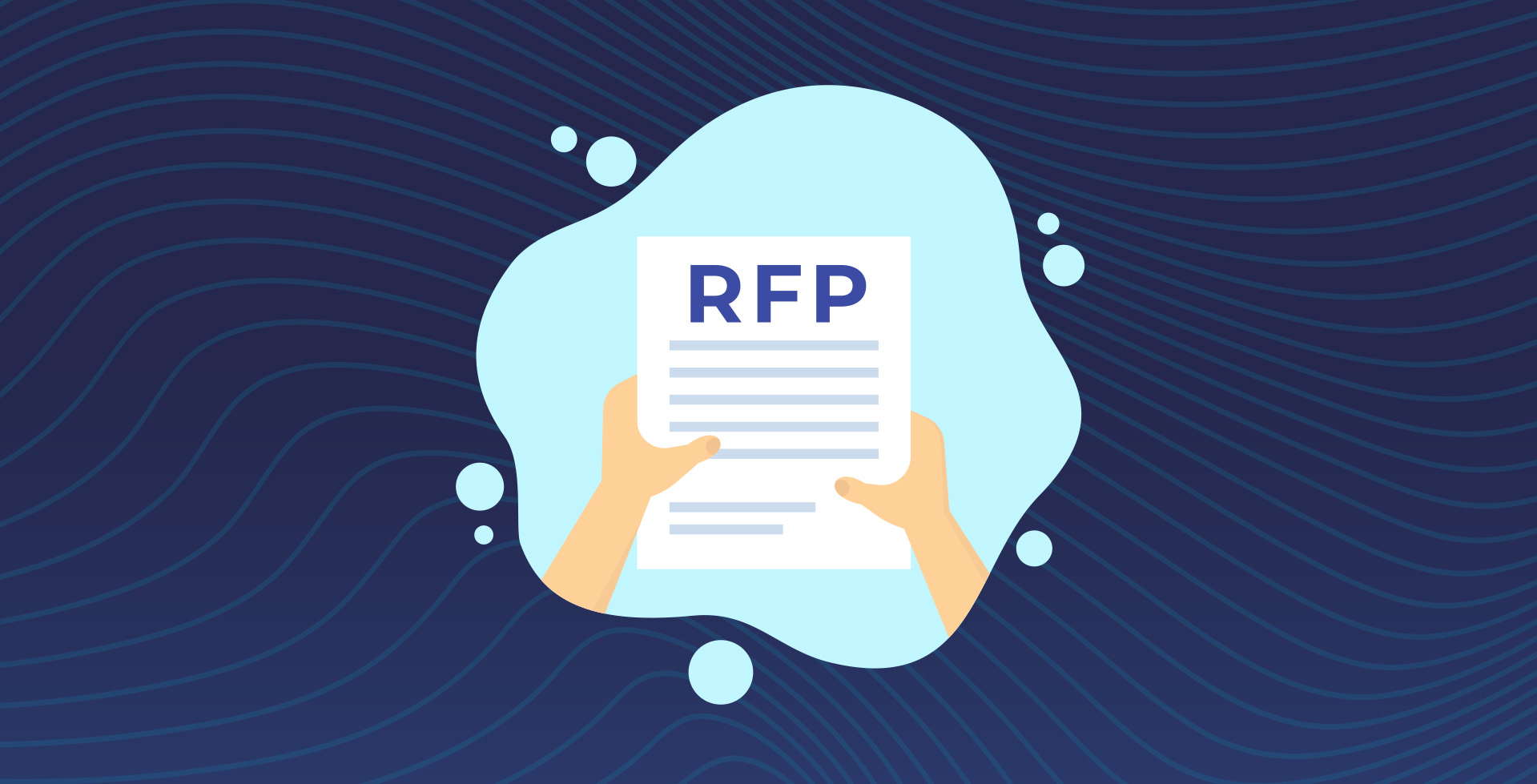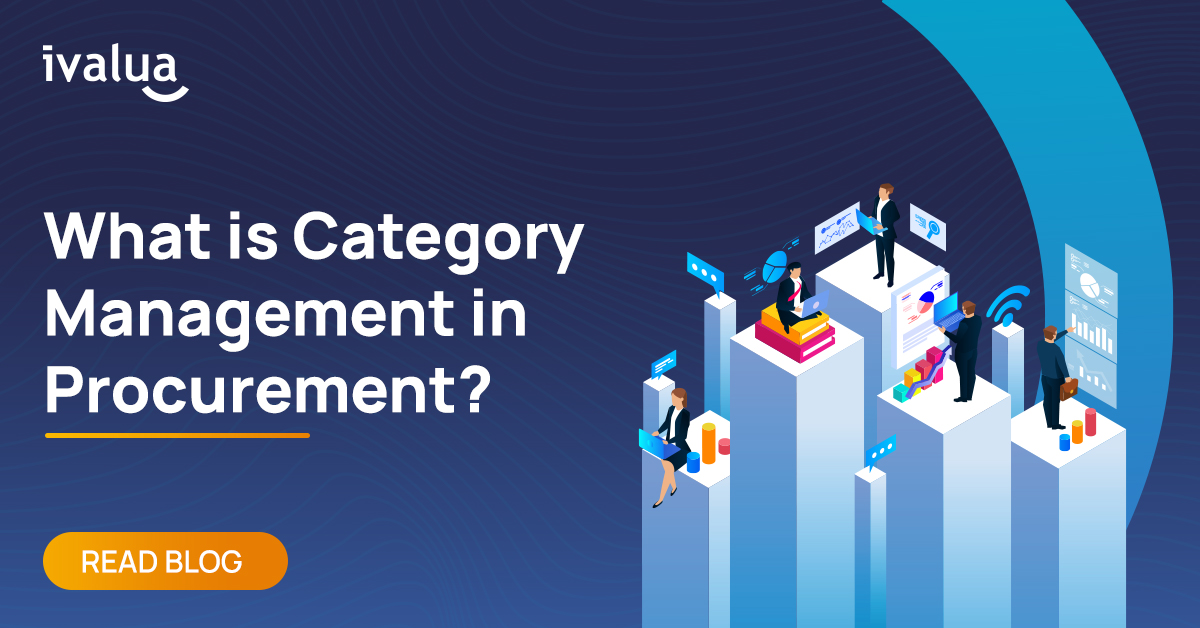Indirect procurement sometimes flies under the radar, but its impact on cost, compliance, and efficiency can be significant.
For many enterprise teams, managing indirect spend feels like a reactive process that’s out of sync with business goals. While juggling decentralized requests, surprise renewals, and one-off contracts, enforcing policy and staying on budget is no easy feat.
However, when left unchecked, mismanaged indirect procurement can cost a lot of money, pose audit risk, and a lack of transparency into who’s buying what – or why.
This blog examines what makes indirect procurement so challenging and outlines a practical path forward. You’ll learn how leading organizations are using procurement technology like Ivalua to regain control, reduce risk, and deliver real business value.
Key Takeaways
- Indirect procurement is often decentralized and reactive, but the right strategy and tools can help you implement structure and efficiency.
- Guided buying, budget enforcement, and integrated supplier data are essential to controlling maverick spend and improving procurement visibility.
- A unified procurement platform will help your team manage indirect sourcing with the same discipline as you manage direct procurement.
| Discover how Ivalua’s unified procurement platform can help you control indirect spend and drive enterprise efficiency. |
What Is Indirect Procurement?
Indirect procurement refers to the sourcing of goods and services that support day-to-day operations but aren’t directly tied to production.
Unlike direct procurement, indirect procurement typically includes categories such as software, marketing services, or travel and is often decentralized, reactive, and difficult to track.
While direct procurement is usually owned by supply chain or procurement teams and tightly managed, indirect procurement tends to span across functions – HR, marketing, IT, finance and others – each with its own vendors, contracts, and approval processes.
As a result, indirect spend is often fragmented and unpredictable, and lacks the structure needed for optimizing procurement processes – unless supported by a centralized digital procurement platform.
Strategic Importance of Indirect Procurement
When it’s managed strategically, indirect procurement offers significant opportunities for business impact. Let’s look at some of the most measurable benefits.
Cost Savings
Structured processes and better visibility into vendors and contracts can unlock substantial savings over time.
Operational Efficiency
Centralized oversight and streamlined approval workflows reduce delays and enable faster purchasing across departments.
Risk Mitigation
Standardized supplier onboarding and contract compliance, and help reduce legal and operational risk.
Innovation Enablement
Partnering with external service providers can introduce new tools, ideas, and capabilities into the business.
Why No One Function Owns Indirect Procurement – And Why That’s a Problem
One of the biggest challenges with indirect procurement is ownership. While direct procurement is usually centralized under procurement or supply chain leadership, indirect spend is typically distributed across business functions.
For example, marketing might manage agency contracts while IT oversees SaaS subscriptions, and HR procures learning services. Each department maintains different processes, tools, and levels of procurement maturity.
A decentralized model such as this one often leads to policy inconsistencies, lack of spend visibility, redundant vendor relationships, and limited use of shared procurement platforms. Without a unified strategy, it’s nearly impossible to control costs or ensure compliance, or apply best practices consistently.
Why Indirect Procurement Lacks Structure and Predictability
Indirect procurement tends to be reactive, transactional, and infrequent, which makes it harder to govern.
Unlike direct procurement, where orders follow forecasted production schedules, indirect purchases are often ad hoc or project-driven. This one-off nature makes it difficult to enforce policies or even track usage.
Categories That Make Indirect Procurement Hard to Control
Category management is particularly difficult when it comes to certain indirect spend categories due to lack of oversight and different purchasing behaviors from between departments. The table below outlines the most troublesome categories and why they pose visibility challenges.
| Category | Why It’s Hard to Control |
| SaaS and Software Subscriptions | Often purchased without IT or procurement review; overlapping tools across teams |
| Legal and Consulting Services | Custom scopes, ad hoc contracts, and vendor relationships built by executives |
| Marketing and Creative Spend | Decentralized agency use, variable project scopes, and inconsistent contract terms |
| IT Hardware and Peripherals | Purchased outside procurement for convenience; lack of asset tracking |
| Office Supplies and Facilities | Routine but decentralized spend; hard to standardize preferences or vendors |
| Travel and Entertainment | Difficult to audit and enforce policy, and often expensed after the fact |
| Outsourced Services | Variable scopes and timelines; contracts managed outside procurement’s visibility. |
With indirect spend categories such as those listed in the table above, approvals may bypass procurement altogether. Contracts might be negotiated directly by business units, and the data needed for strategic sourcing is often fragmented or, worse yet, unavailable.
Without standardization and consistent oversight, indirect spend remains a major source of inefficiency and potential risk.
Now that we understand why unmanaged indirect spend is dangerous, let’s take a look at key differences between indirect and direct spend, and why managing both of them well is so important.
Indirect vs. Direct Procurement: Understand the Differences
Direct and indirect procurement serve fundamentally different roles within an enterprise, yet both are critical to business performance.
- Direct procurement refers to the sourcing of raw materials, components, and parts that are directly used in the production of goods. It is closely tied to product design, quality, and delivery, and it plays a key role in determining cost of goods sold (COGS), supplier reliability, and overall supply chain performance.
The direct procurement process is often tightly integrated with enterprise systems such as ERP and PLM, and spans product introduction through to end-of-life.
- Indirect procurement covers the acquisition of goods and services needed to support internal operations – think IT, HR, facilities, and marketing. While these purchases don’t go into the finished product, they enable business continuity, workforce productivity, and operational efficiency.
Indirect procurement is typically more decentralized, involving a wider range of stakeholders, and is often less structured than its direct counterpart.
Both types of procurement require strategic oversight, but their processes, priorities, and stakeholders differ substantially. The table below goes into more detail about the main differences between direct vs. indirect procurement.
Comparison Table: Direct vs. Indirect Procurement
| Aspect | Direct Procurement | Indirect Procurement |
| Definition | Purchasing of raw materials and components used in manufacturing or product delivery | Purchasing of goods/services to support operations (e.g., IT, marketing, facilities) |
| Business Impact | Directly affects product quality, production timelines, revenue and profit generation | Supports internal functions; impacts operational efficiency but not the product itself |
| Typical Categories | Raw materials, parts, packaging, components | Software, SaaS, travel, legal, consulting, office supplies, facilities |
| Procurement Process | Structured, strategic, often aligned with product lifecycle and ERP procurement systems | Often transactional or reactive; varies across functions; less standardized |
| Stakeholders Involved | Supply chain, production, engineering, quality assurance | IT, HR, marketing, facilities, finance |
| Supplier Relationships | Strategic partnerships; long-term contracts; essential for continuity and cost | Often transactional; multiple vendors per category; fewer long-term relationships |
| Risk Exposure | Disruptions can halt production and impact customer satisfaction | Risk affects internal operations; can reduce efficiency or service quality |
| Compliance Requirements | High; due to quality, safety, and regulatory standards for goods | Medium; focused on service-level agreements, privacy, and financial controls |
| Cost Considerations | High volumes; direct influence on margins and pricing strategy | Accumulates across categories; impacts overhead and operating budget |
| Operational Efficiency Focus | Ensures supply continuity, inventory management, and production readiness | Streamlines support processes; reduces redundancy and indirect cost leakage |
| Innovation Potential | Often related to materials science or production optimization | Tied to process automation, digital tools, and vendor-driven innovation |
| Strategic Objectives | Product cost management, supply chain resilience, quality control | Cost optimization, process efficiency, service enablement across the enterprise |
Organizations benefit most when they manage both types of procurement with the right systems and governance. A unified AI-powered procurement platform that supports transparency, efficiency, and control across categories is the best way to accomplish that goal.
Before we explore the benefits of a unified procurement platform, let’s take a look at some of the challenges you might face in various scenarios where indirect procurement spend isn’t managed properly.
The Challenges of Unmanaged Indirect Procurement
The effect of mismanaged indirect spend can ripple across an organization, quietly eroding budgets and weakening compliance management. Below, we explore three common (but avoidable) scenarios that illustrate the real-world consequences of leaving indirect spend unmanaged.
Cost Leakage and Maverick Spend
Here’s the first scenario: A marketing team urgently needs a project management tool and decides to purchase a license for Notion. A few weeks later, they also subscribe to Grammarly Business to support content development. The purchases are billed monthly, charged to a team credit card, and never routed through procurement.
Six months pass before anyone in procurement discovers the subscriptions. By then, the organization has already paid hundreds (or thousands) of dollars in off-contract spend. Worse yet, IT had negotiated an enterprise deal for similar tools months earlier.
This kind of maverick spend adds up quickly, thanks to redundant tools and missed volume discounts. Without visibility or control, it’s nearly impossible to manage indirect categories strategically or renegotiate terms based on consolidated usage.
Compliance and Audit Exposure
Now imagine an HR department engaging a consulting firm to run a training program. The team moves quickly but skips the standard approval process. The contract is signed by a department head, the terms are negotiated informally, and supporting documentation is minimal.
Unfortunately, no one reviews the vendor’s data security protocols, insurance coverage, or compliance with internal procurement policies.
When audit season rolls around, this becomes a problem. There’s no documented approval trail, and the vendor wasn’t properly vetted. These gaps not only create friction with internal audit and finance teams, they can also expose the organization to legal or regulatory risk.
Lack of End-to-End Spend Visibility
Perhaps most critically, unmanaged indirect procurement makes it difficult for finance and procurement teams to answer a basic question: who’s buying what, from whom, and under what terms?
Without centralized systems, indirect spend data is scattered across spreadsheets, email threads, expense reports, and one-off e-procurement solutions. Contracts might be negotiated independently by different departments and stored on individual drives – or (often) not documented at all. As a result, there’s no unified view of supplier performance, contract obligations, or cumulative spend by category.
This lack of visibility undermines cost control and compliance and. It also undermines supply chain risk management and makes data-informed decisions about key procurement responsibilities difficult.
The bottom line? Fragmented supplier risk management introduces real operational vulnerabilities, especially as organizations scale.
How Enterprise Teams Control Indirect Procurement
Managing indirect procurement at scale requires integrated processes and intelligent automation. Leading enterprise teams use Ivalua’s cloud-based procurement platform to bring structure to indirect spend, driving compliance without sacrificing agility.
By unifying sourcing, contracting, supplier data, and finance workflows, Ivalua’s procurement software enables teams to control costs and reduce risk, while adding demonstrable value across the organization. Here’s how.
Guided Buying and Role-Based Approvals
One of the most effective ways to reduce maverick spend is to make the right path the easiest one.
Ivalua guides users to preferred vendors and purchasing options through intuitive catalogs, smart intake forms, and pre-coded workflows. These experiences are configured by category, spend type, or business unit, ensuring that no one has to guess where to go or who to ask before making a purchase.
At the same time, Ivalua routes each request through role-based approval flows, automatically adjusting based on the purchase amount, cost center, or strategic value of the item or service. This enables full policy enforcement without slowing teams down.
By leveraging AI in procurement and embedding this control directly into the user experience, enterprises can eliminate rogue spend and reinforce procurement’s value without creating friction for requesters. The procurement platform visualizes every stage of the process, so procurement teams can easily track compliance and proactively address gaps.
Budget Enforcement at Requisition
Ivalua enables real-time budget validation at the point of requisition rather than after the fact. This means users receive immediate alerts if their request exceeds a threshold or violates a departmental budget.
The system applies approval thresholds during the purchase requisition process dynamically, based on business rules. This allows finance and procurement to define limits for specific departments, projects, or spend categories.
These capabilities are fully integrated with financial planning systems, giving organizations a consolidated view of budget status and procurement activity.
Through multi-ERP integration, Ivalua ensures that spend controls are consistently applied, even in complex IT environments with multiple backend systems. This integration helps unify procurement and finance objectives, reinforcing fiscal discipline without the need for manual checkpoints.
Connected Data for Contract and Supplier Performance
Indirect procurement often fails when sourcing, contracting, and supplier performance are disconnected. Ivalua solves this by linking all three in a single system.
With Ivalua, sourcing ensures buyers make informed decisions through efficient “Quick Quote” and powerful Sourcing Project, RFx, and Auction capabilities. Sourcing data flows seamlessly into contract records, which are tied to live supplier profiles. This enables procurement teams to manage everything from negotiated terms to risk scores in one place, while making those terms visible at the moment of requisition.
Ivalua’s contract lifecycle management software enables the digitalization of contracts and metadata is extracted so teams can easily manage milestones, obligations, and renewals with full visibility. It also helps surface preferred terms and clauses that can be referenced during purchasing or renewal negotiations.
Meanwhile, Ivalua’s supplier management software consolidates performance data, certifications, and risk indicators to support better decision-making and faster responses to emerging issues.
Together, these capabilities provide the data integrity and process control enterprises need to manage indirect procurement strategically, not reactively.
Sourcing Strategy for Indirect Procurement: Essential Steps
A well-executed sourcing strategy for indirect procurement can help you reduce unnecessary spend, improve supplier performance, and boost internal satisfaction with procurement services.
But because indirect categories are decentralized and variable, success depends on strong process governance and real-time collaboration. Ivalua’s AI-powered procurement platform makes it easier to standardize intake, enforce policy, and centralize data, without sacrificing flexibility.
Here’s how leading teams are structuring their approach.
Standardize Intake and Demand Signals
The first step in any sourcing event is understanding demand, and that requires structured intake. With Ivalua, procurement teams can capture detailed, categorized requests from across the business using smart, GenAI powered intake forms.
A conversational, and guided experience ensures that users answer relevant questions based on the spend category, business unit, or urgency, ensuring consistency in how needs are defined and orchestrated.
By linking intake data directly to planning and budget tracking systems, organizations can align sourcing activities with actual demand signals, not just guesswork. This reduces redundant requests, helps identify opportunities for vendor consolidation, and ensures sourcing teams are focused on the highest-value opportunities.
Pre-Vet Suppliers to Avoid Ad Hoc Sourcing
One of the fastest ways to lose control over indirect procurement is to source from unvetted vendors. Ivalua helps procurement teams avoid this with centralized supplier management. Approved suppliers are stored in a searchable directory complete with performance data, contract status, risk ratings, and preferred vendor flags.
When a sourcing event is triggered, teams can work from this pre-qualified list and avoid last-minute evaluations or duplicative vendor entries. Another key benefit is a faster sourcing cycle.
Over time, organizations can build stronger relationships with indirect suppliers by tracking performance and collaboration history in Ivalua’s centralized system, avoiding surprises and realizing better long-term value.
Manage Decentralized Stakeholder Input
Unlike direct sourcing, which often involves a focused set of stakeholders, indirect procurement requires coordination across HR, IT, marketing, facilities, and other functions. Ivalua enables this cross-functional engagement through flexible workflows and contract lifecycle management capabilities that support role-based access and automated collaboration points.
Stakeholders can review, comment, or approve sourcing documents without needing full system access or custom workflows. Procurement retains governance, but input is gathered efficiently and consistently, reducing cycle time and aligning sourcing outcomes with actual internal needs.
Keep Sourcing Connected to Policy and Budget
Ivalua’s spend analysis tools make it easy to embed procurement policies and budget constraints directly into sourcing workflows.
During a sourcing event, teams can automatically flag when terms deviate from policy, when spend exceeds thresholds, or when contracts bypass preferred vendors, simplifying procurement analytics. By linking sourcing activities to real-time reporting on budget data and predefined policy controls, you can avoid unapproved exceptions and improve alignment between procurement and finance.
Together, these steps create a sourcing process that’s transparent, scalable, and built for the complexity of indirect procurement, while giving your team the confidence that every event is compliant, efficient, and generating value for the organization.
Customer Story: How BVLGARI Achieved
BVLGARI, a global luxury retailer, faced significant challenges in its digital procurement transformation journey. With a decentralized international footprint, a newly established sourcing department, and no historical purchasing culture, the organization needed to drive change in an environment resistant to it. High expectations for user experience, typical of the luxury sector, added pressure to deliver a sleek, intuitive solution.
With no prior purchasing culture and pressure to maintain existing systems, the company aimed to boost profitability through cost optimization and lean, modular procurement processes.
Partnering with Ivalua, BVLGARI, rolled out a standardized Procure-to-Pay (P2P) process across 15 countries. The platform delivered a flexible, user-friendly experience tailored to stakeholder needs, while simplifying ERP integration and supporting phased adoption.
“We started by deploying standard out-of-the-box functionality in Ivalua with a focus on achieving early and quick wins. After this, we reviewed our entire processes by applying lean management principles and embedding stakeholders’ feedback. The flexibility of Ivalua’s platform allowed us to evolve with the organization needs, which accelerated adoption and generated further efficiencies and cost optimization.”
– Arianna VETRUGNO, Sourcing Excellence Senior Manager, BULGARI
Read the full BVLGARI case study.
Build Control and Visibility into Indirect Procurement
Managing indirect procurement doesn’t have to mean sacrificing control for flexibility—or vice versa. As this article outlines, the key lies in building processes that reflect the realities of indirect spend: its decentralization, variability, and cross-functional nature. From guided buying to structured sourcing strategies, leading enterprises are adopting tools and practices that reduce maverick spending, enforce policy, and improve collaboration across teams.
With Ivalua’s AI-powered procurement platform, global organizations can standardize intake, enforce budget checks, and unify supplier and contract data, all while giving stakeholders a streamlined, intuitive experience. The result is better compliance and cost control, and a procurement function that truly supports the business.
| Streamline indirect spend with full control and visibility with Ivalua.Watch Demo | Find Out More |
FAQs
Why does it matter who owns indirect procurement?
Clear ownership ensures accountability, consistency, and policy enforcement across departments. Without it, indirect spend often becomes fragmented and inefficient.
Can one platform manage indirect procurement effectively?
Yes, an integrated procurement platform can centralize intake, approvals, supplier data, and contracts. This enables visibility, control, and process standardization.
What’s the risk of managing indirect procurement in silos?
Siloed management leads to duplicate vendors, missed savings, and inconsistent compliance. It also limits visibility into total spend and supplier performance.
How should we track savings in indirect procurement?
Track both hard savings from negotiated contracts and soft savings from process efficiencies and risk mitigation. Use reporting tools to tie savings to spend categories and budget impact.
Further Reading
Procurement Transformation Roadmap: Driving Greater Productivity Through Digitization
Procurement Automation: The What, Why and How
What is Procurement? Types, Process & Solutions
Procurement Technology: Enterprise Solutions Driving Efficiency and ROI















